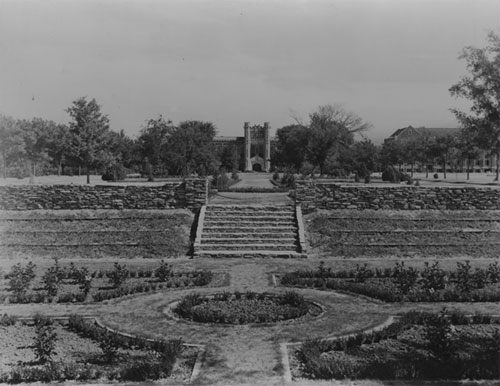
Beginning in the late 1920s, the universityís south oval, or Van Vleet Oval as it is formally known, underwent a transformation that has continued to the present day. The above photo shows the oval in 1925. It was covered then by rough prairie grass and surrounded by trees that included a variety of elms and oaks, walnut, linden, maples, birches, sycamores, and willows. Many of these trees were planted in this area with the expectation that they would be moved to other locations as needed. This mini tree farm may be seen at the upper left of the photo. During the late 1920s, James H. Craven, OUís landscaper, began the transformation process by replacing the prairie grass with Bermuda.

The south oval made a quantum landscaping leap in 1939 when it benefited from an influx of Work Projects Administration funding. Howard Jensen was then OUís landscaper and with $32,000 in hand and sixty WPA laborers he developed the south oval that we see today. While the sunken garden featured in the photo at right was one of the major projects during the summer of 1939, Jensen also oversaw the pouring of new sidewalks, construction of another sunken garden between Bizzell Library and Evans Hall, and added shrubs and flower beds all around campus. The first plants chosen for the south oval garden included red verbenas on its sloping banks and Chinese hibiscus in the flower beds. Dwarf privet hedge lined the borders of the beds.

